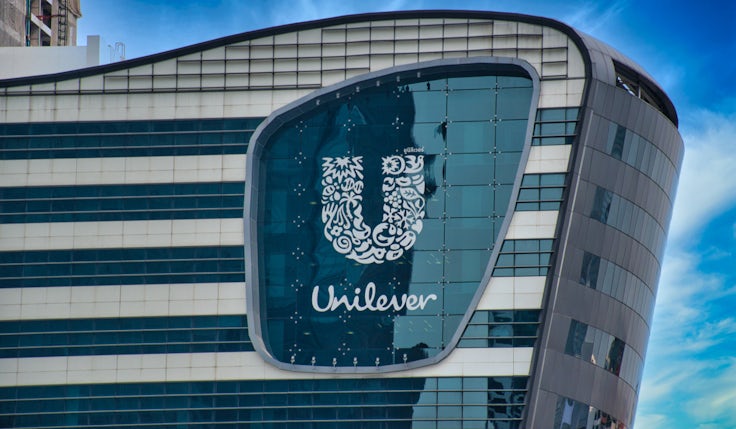The illusion of innovation: When new products and redesigned packs don’t solve a real problem
Design decisions must be informed by evidence that any changes will solve a real problem. Blindly following trends will likely end in disaster.

In today’s competitive marketplace, brands feel pressure to remain relevant by keeping up with the latest trends. This pressure can lead to companies frequently redesigning or launching products in order to be perceived as modern and up to date.
However, chasing trends without truly understanding what is driving changing consumer needs or long-term behaviour shifts can result in wasted efforts and missed opportunities.
The trend trap
In product design, there is often pressure to refresh packaging in the hope of attracting attention. The Ehrenberg-Bass Institute analysed case studies and survey responses from 569 brand managers, finding that the most common trigger for redesigns is the belief that a brand looks outdated.
However, without clear evidence of changing consumer needs, redesigns based on surface-level trends frequently fail to deliver.
Coca-Cola and PepsiCo have both previously updated their flagship products in response to an increase in health awareness among consumers. This wasn’t achieved by simply redesigning the graphics on pack, but rather by launching Coca-Cola Life and Pepsi Next. These soft drinks used stevia to reduce the sugar content and were marketed as healthier alternatives. Yet both initiatives failed to gain traction and were pulled from shelves not long after launch. Why? Because consumers weren’t just looking for “healthier” versions of existing products – these already existed in products like Coke Zero and Pepsi Max. Instead, there was a shift in behaviour towards new, healthier drink categories like sparkling water, cold brews, and kombucha.
Trends are tempting. As marketers, you see your brand day in, day out. Of course you’re ready for a refresh. But chances are, consumers are not.
Chasing trends without truly understanding consumer motivations can waste time and resources. One recent example that stood out to us is from New Zealand’s iconic biscuit brand, Griffins. In April of 2025, it removed the much-loved Cookie Bear character from its packaging after 57 years on shelf. According to the Otago Daily Times, the goal was likely to modernise the design, appeal to an older audience, and improve shelf visibility. But the result left many consumers confused and disappointed.
It has been observed that when brands remove a long-standing character asset from their packaging, they reduce the distinctiveness of the pack, making it harder for shoppers to recognise.
Unsurprisingly, such changes often spark strong backlash. Many people expressed sadness over the loss of a familiar and meaningful brand symbol.
Without that distinctive asset, the product now risks blending in with the rest of the biscuit aisle.
Marketers can’t ignore the opportunity of ‘new frugal innovation’
Redesigning from consumer insights, not trends
Redesigning packaging or creating a new SKU shouldn’t be driven by surface-level trends or a gut feeling that the design is out of date; they should be based on informed insights and provide an opportunity to rethink the core function to meet new needs. In other words, the misstep isn’t trying to evolve, it’s evolving without a clear understanding of where consumers’ values are headed for the long term.
In the beverage industry, rather than tweaking existing products to make them “healthier”, brands have recently developed entirely new drink categories that meet real health needs.
Coca-Cola’s Simply Pop and PepsiCo’s recent $1.95bn acquisition of Poppi mark a pivot toward prebiotic sodas that better align with the wellness trend and capture the growing health and wellness market. Though both companies missed the opportunity to tap into this product innovation earlier and opted instead for artificially sweetened alternatives, these new products better react to changes in health-conscious behaviour, ultimately offering greater long-term success.
The importance of timelessness in design
Successful product designs meet consumer needs and remain adaptable to long-term changes in the market. They’re not just about following trends that could change year to year, but reflect lasting values like functionality, sustainability and convenience, all while staying true to the brand’s identity.
Take Apple’s iPhone design or Adidas’s trainers: these products continuously evolve and integrate new technologies, yet retain the core design and functional elements that make them distinctive in the minds of the consumers. Their products don’t chase short-term trends but anticipate what consumers will need next and keep their brand identity consistent.
Make informed design decisions
Trends are tempting. As marketers, you see your brand day in, day out. Of course you’re ready for a refresh. But chances are, consumers are not.
Good redesigns are based on insights, not impulse. A strong, distinctive asset palette allows brands to modernise without losing their identity. It ensures recognition remains high, even when adapting to new formats, trends or product ranges.
Whether it’s removing a beloved mascot from pack, launching a new product variant, or just refreshing the graphic design, brands should be asking: Do we have evidence that this will solve a real problem? What are consumers seeking that our current product offerings don’t provide? Are we reacting to a trend or evolving with changing consumer behaviour?
The best approach isn’t to mimic the latest trend or repeat a successful design from past case studies, but to consider the broader needs of consumers.
Keep an eye on emerging product categories that could provide opportunities to meet evolving consumer demands. In a constantly changing world, the brands that succeed are those that look forward, not just back at what worked in the past, while staying anchored by a consistent brand identity built through their distinctive assets.
Brooke Klement and Dr Will Caruso are senior marketing scientists at the Ehrenberg-Bass Institute of Marketing Science.






